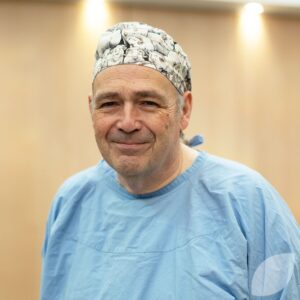Chondrosarcoma, also known as chondrogenic sarcomacancer arising from bones and/or soft tissue, is one of the most common types of bone cancera disease where abnormal cells split without control and spread to other nearby body tissue and/or organs, and develops from the cartilage on the end of bones. Chondrosarcomas are most commonly found in the femur (thigh bone), shoulder, hip, or pelvis, but can also develop in the knees, ribs, skull, spine, and tracheathe tube that connects your voicebox (larynx) to the lungs, also known as a windpipe.
Cartilage is smooth, connective tissuea group of cells that work together to perform a function that protects and lines joints and the ends of bones. There are three main types of cartilage in the body: hyaline, elastic, and fibrocartilage. Hyaline cartilage, also known as articular cartilage, is the most abundant type of cartilage in the body, and generally 2-4mm thick. It is most commonly found in the joints and on the ends of bones, and is slippery and smooth in order to help your bones move smoothly past each other. Hystine cartilage is most commonly found in the ribs, nose, ears, larynx (throat), trachea (windpipe), and on the ends of bones. Elastic cartilage, also known as yellow fibrocartilage, is less abundant, and supports the parts of the body that need to move to function. It is able to return to its original shape when moved, and is most commonly found in the ear and larynx. Fibrocartilage is a dense and generally stronger than the other types of cartilage. Its primary function is support weight-bearing areas of the body, and is most commonly found in the intervertebral discs of the spine and the meniscus of the knee. Most chondrosarcomas develop from hyaline cartilage.
Chondrosarcomas are often confused with another type of bone cancer known as osteosarcoma. Osteosarcoma, or osteogenic sarcoma, is the most common type of bone cancer that is usually found in the ends of long bones, such as the shin, femur (thigh bone) and humerus (upper arm bone). However, unlike chondrosarcoma, osteosarcomas develop from osseous (or bone) cellsthe basic structural and functional unit of all living things as opposed to cartilage. For more information on osteosarcomas, please visit the rare cancers Australia osteosarcoma page.
Chondrosarcomas are generally diagnosed equally among the sexes, and tends to be diagnosed in people over 40 years old. However, anyone can develop this disease.
Types of Chondrosarcoma
There are several different types of chondrosarcoma, which are categorised based on the types of cells they originate from.
Conventional Chondrosarcoma
Conventional chondrosarcomas are the most common subtype of this disease. There are several different types of conventional chondrosarcomas, which are classified by their location.
Central Chondrosarcoma
Central chondrosarcomas are the most common type of conventional chondrosarcoma, and generally arise within the medullary cavity (the central, hollow portion of the bone that contains bone marrowsoft, spongy tissue found in bones that makes blood cells). This type of tumoura tissue mass that forms from groups of unhealthy cells is slightly more common in males, and often affects the femur, pelvis, or humerus. Central chondrosarcomas can be aggressive, but can have a good prognosisto predict how a disease/condition may progress and what the outcome might be when caught early.
Secondary Peripheral Chondrosarcoma
Secondary peripheral chondrosarcoma is a less common subtype of conventional chondrosarcoma that has metastasised (or spread) from an existing osteochondroma (a benignnot cancerous, can grow but will not spread to other body parts or non-cancerous bone tumour). This type of tumour tends to be diagnosed in patients under 50 years old, and generally affects the pelvis or the shoulder. Secondary peripheral chondrosarcomas can be aggressive, but can have a good prognosis when caught early.
Periosteal/Juxtacortical Chondrosarcoma
Periosteal chondrosarcomas, also known as juxtacortical chondrosarcomas, are a very rare subtype of conventional chondrosarcomas that tend to affect the femur. Unlike other chondrosarcomas, these tumours are slightly more common in men and tend to affect people between the ages of 20-40. Although these tumours can be aggressive, they often have a good prognosis.
Clear Cell Chondrosarcoma
Clear cell chondrosarcoma is a less common type of chondrosarcoma that generally develops from the epiphysis (the rounded end of the long bone) of the humerus or femur. Unlike most types of chondrosarcoma, these tumours are significantly more common in men, and generally affect people between the ages of 30-50. These tumours are generally nonaggressive, and can have a good prognosis.
Myxoid Chondrosarcoma
Myxoid chondrosarcoma is a rare type of chondrosarcoma that can affect both bone and soft tissuetissue/the material that joins, holds up or surrounds inside body parts such as fat, muscle, ligaments and lining around joints. They most commonly develop in the deep soft tissue of the thigh and other extremities, and tend to affect people between the ages of 30-60 with a slight predilection for men. While this subtype can be aggressive, it can have a good prognosis when found early.
Mesenchymal Chondrosarcoma
Mesenchymal chordosarcomas are a rare and highly aggressive subtype of chondrosarcomas that commonly develop in facial bones, ribs, pelvic bone, and spine. Unlike other chondrosarcomas, this subtype tends to affect people between the ages of 25-30. Mesenchymal chondrosarcomas are very aggressive, and may not have as good of a prognosis as other types of chondrosarcomas.
Dedifferentiated Chondrosarcoma
Dedifferentiated chondrosarcomas are a rare and highly aggressive subtype of chondrosarcoma that generally develop in the pelvis, femur, or humerus. It generally affects people between the ages of 50-60, and may spread to nearby soft tissue. Dedifferentiated chondrosarcomas are very aggressive, any may not have as good of a prognosis as other types of chondrosarcoma.
Treatment
If a chondrosarcoma is detected, it will be staged and graded based on size, metastasiswhen the cancer has spread to other parts of the body, also known as mets, and how the cancer cells look under the microscope. Stagingthe process of determining how big the cancer is, where it started and if it has spread to other areas and grading helps your doctors determine the best treatment for you.
Cancers can be staged using the TNM staging system:
- T (tumour) indicates the size and depth of the tumour.
- N (nodea small lump or mass of tissue in your body) indicates whether the cancer has spread to nearby lymph nodessmall bean-shaped structures that filters harmful substances from lymph fluid.
- M (metastasis) indicates whether the cancer has spread to other parts of the body.
This system can also be used in combination with a numerical value, from stage 0-IV:
- Stage 0: this stage describes cancer cells in the place of origin (or ‘in situ’) that have not spread to nearby tissue.
- Stage I: cancer cells have begun to spread to nearby tissue. It is not deeply embedded into nearby tissue and had not spread to lymph nodes. This stage is also known as early-stage cancer.
- Stage II: cancer cells have grown deeper into nearby tissue. Lymph nodes may or may not be affected. This is also known as localisedaffecting only one area of body cancer.
- Stage III: the cancer has become larger and has grown deeper into nearby tissue. Lymph nodes are generally affected at this stage. This is also known as localised cancer.
- Stage IV: the cancer has spread to other tissues and organs in the body. This is also known as advancedat a late stage, far along or metastatic cancer.
Cancers can also be graded based on the rate of growth and how likely they are to spread:
- Gradea description of how abnormal cancer cells and tissue look under a microscope when compared to healthy cells I: cancer cells present as slightly abnormal and are usually slow growing. This is also known as a low-grade tumour.
- Grade II: cancer cells present as abnormal and grow faster than grade-I tumours. This is also known as an intermediate-grade tumour.
- Grade III: cancer cells present as very abnormal and grow quickly. This is also known as a high-grade tumour.
Once your tumour has been staged and graded, your doctor may recommend genetic testinga procedure that analyses DNA to identify changes in genes, chromosomes and proteins, which can be used to analyse tumour DNA to help determine which treatment has the greatest chance of success, which analyses your tumour DNA and can help determine which treatment has the greatest chance of success. They will then discuss the most appropriate treatment option for you.
Treatment is dependent on several factors, including location, stage of disease and overall health.
Treatment options for chondrosarcomas may include:
- Surgerytreatment involving removal of cancerous tissue and/or tumours and a margin of healthy tissue around it to reduce recurrence, potentially including:
- En bloc resectionremoval of the entire tumour in a single piece with a healthy margin of tissue surrounding it.
- Curettagea procedure where the cancer is scraped out with a small, sharp instrument (curette).
- Limb-sparing surgerysurgery to remove the cancer only and salvage the affected limb.
- Amputationcomplete or partial removal of a limb.
- Bone grafta surgical procedure that uses bone tissue from another bone in the body or from another person to repair or rebuild damaged or diseased bones..
- Radiation therapya treatment that uses controlled doses of radiation to damage or kill cancer cells.
- Chemotherapya cancer treatment that uses drugs to kill or slow the growth of cancer cells, while minimising damage to healthy cells.
- Cryotherapythe process of freezing off cancerous tumours and/or lesions using liquid nitrogen.
- Clinical trialsresearch studies performed to test new treatments, tests or procedures and evaluate their effectiveness on various diseases.
- Palliative carea variety of practices and exercises used to provide pain relief and improve quality of life without curing the disease.
Risk factors
While the cause of chondrosarcomas remains unknown, the following factors may increase the likelihood of developing the disease:
- Ollier’s disease (also known as enchondromatosis).
- Maffucci syndrome.
- Multiple hereditary exostoses (MHE).
- Wilms’ tumour.
- Paget’s disease.
- Li-Fraumeni syndrome.
- Previous treatment with chemotherapy.
- Previous treatment with radiation therapy.
Not everyone with these riskthe possibility that something bad will happen factors will develop the disease, and some people who have the disease may have none of these risk factors. See your general practitioner (GP) if you are concerned.
Symptoms
Symptoms of a chondrosarcoma may include:
- Large massa growth of cells that come together to make a lump, may or may not be cancer on a bone.
- Pressure surrounding mass in affected area.
- Pain that gets worse overtime or at night.
- Weakness in affected area.
- Limited movement in affected area.
- Swelling of affected area.
- Joint stiffness in affected area.
- Changes in bowelportion of the digestive system that digests food (small bowel) and absorbs salts and water (large bowel); also called intestines and/or bladdera hollow, muscular sac in the pelvis that stores urine habits (chondrosarcomas of the pelvis).
Not everyone with the symptoms above will have cancer, but see your general practitioner (GP) if you are concerned.
Diagnosis
If your doctor suspects you have a chondrosarcoma, they may order the following tests to confirm the diagnosisthe process of identifying a disease based on signs and symptoms, patient history and medical test results and refer you to a specialist for treatment:
- Physical examinationan examination of your current symptoms, affected area(s) and overall medical history.
- Imagingtests that create detailed images of areas inside the body tests, potentially including:
- X-raya type of medical imaging that uses x-ray beams to create detailed images of the body .
- MRI (magnetic resonance imaging)a type of medical imaging that uses radiowaves, a strong magnet and computer technology to create detailed images of the body.
- CT (computed tomography) scana type of medical imaging that uses x-rays and computer technology to create detailed images of the body.
- Bone scana type of medical imaging that uses a radioactive tracer to detect bone conditions or abnormalities.
- Blood teststesting done to measure the levels of certain substances in the blood.
- Biopsyremoval of a section of tissue to analyse for cancer cells.







